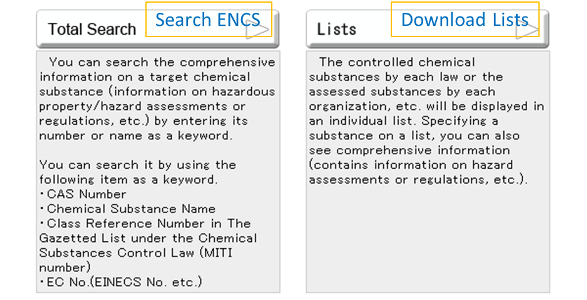Japan Chemical Substance Control Law (Japan CSCL)
Little Pro on 2015-12-31
The Act on the Evaluation of Chemical Substances and Regulation of Their Manufacture, etc. (hereinafter the "Chemical Substances Control Law") was firstly enacted in 1973 to prevent environmental pollution by chemical substances that pose a risk to human health or the environment. That latest amendment was made in 2009. Full implementation of amended CSCL started from 1 April 2011.
Main Requirements of Japan CSCL
Japan CSCL controls both new and existing substances. For new substances, a strict pre-manufacture evaluation system is implemented. For existing substances, manufacturers or importers are required to report their quantity and uses annually if the volume of manufacture (M) or importation (I) exceeds certain amount. CSCL also designates substances subject to priority risk assessment and prohibits some substances from M/I.
Regulated Substances under Japan CSCL
The table below summarizes the definitions of different categories of chemicals under CSCL and how they are regulated in Japan.
| Category | Definition and Requirement |
|---|---|
| New Substances |
|
| General Chemical Substances |
|
| Exempt Substances |
|
| Priority Assessment Chemical Substances (PACs) |
|
| Monitoring Chemical Substances |
|
| Class II Specified Chemical Substances |
|
| Class I Specified Chemical Substances |
|
New Substance Notification under Japan CSCL
A person who intends to manufacture or import a new chemical substance shall notify it to three ministries at least three months prior to the manufacture or importation. The three ministries are the Ministry of Economy, Trade and Industry (METI), the Ministry of Labor and Welfare (MHLW), and the Ministry of the Environment (MOE).
A new substance is defined as a chemical substance other than the following substances:
- A substance that is on the list of existing and new chemical substances (ENCS);
- Monitoring chemical substances;
- Priority assessment chemical substances;
- Class I or II specified chemical substance;
Japan ENCS consists of two parts:
- Existing chemical substances placed on Japanese market before 16 Oct 1973 (approximately 20,600 substances);
- New chemical substances that have been notified under the CSCL, determined to be "safe" and published on government Gazette((approximately 8,000 substances);
Note: Some substances are exempt from new substance notification. A new substance is also subject to notification under ISHL if it is not on ISHL list.
Read more about new substance notification in Japan.
Annual Reporting of General Chemical Substances and PACs
This is a new requirement for manufacturers and importers under amended CSCL. The main purpose of annual reporting is to provide the Japanese government with the information on the volume and uses of existing chemical substances placed on Japanese market. Based on the info received and available knowledge on chemical hazards, the Japanese government may take further regulatory actions against those existing substances by adding them onto different regulatory lists such as the list of priority assessment chemicals or the list of specified chemical substances.
Annual report shall be submitted to the Ministry of Economy, Trade and Industry (METI) between April 1 and June 30. The table blow summarizes required info for annual reporting:
| Category | Info Required |
|---|---|
| General Chemical Substances |
|
| Priority Assessment Chemical Substances |
|
Not all substances are subject to annual reporting. The following substances are exempt from annual report:
- Substances in articles or preparations that are sold to general consumers;
- Substances that are manufactured and imported with a total amount less than 1t/y;
- Substances for testing & research purpose;
- Substances that have been confirmed as intermediate, PLCs or low production;
- Substances that are announced as exempt due to their low concern(exemption list).
Be Careful with Class I Specified Chemical Substances
When chemical substances are designated as Class I Specified Chemical Substances under CSCL, people who intend to manufacture and import the substances are required to receive permission in advance, and they are prohibited against any use other than permitted uses. In addition, the Government of Japan imposes certain measures on products that use chemical substances designated as Class I Specified Chemical Substances, including an import ban on articles or preparations containing those substances.
Reference & Resources
Click here to access all references and resources for Japan including the English translation of regulations, regulatory lists and useful links to the websites of competent authorities.
Having Questions?
We do not provide consultancy services. If you have questions or need any help, please contact our sponsor. You may also find an expert in CSP business directory below. If you are a consultant, you may get yourself listed in CSP business directory (free) or sponsor this page to leave your contact info on this page..

Tags: Topics - Japan, REACH-like Regulation and Registration
